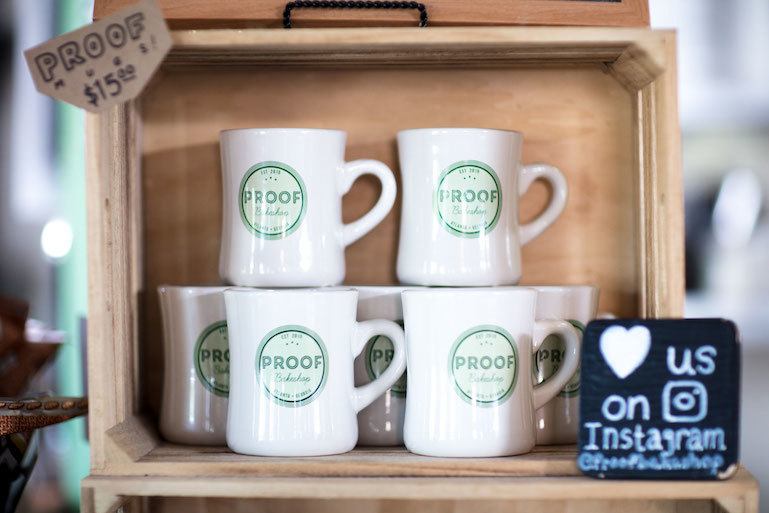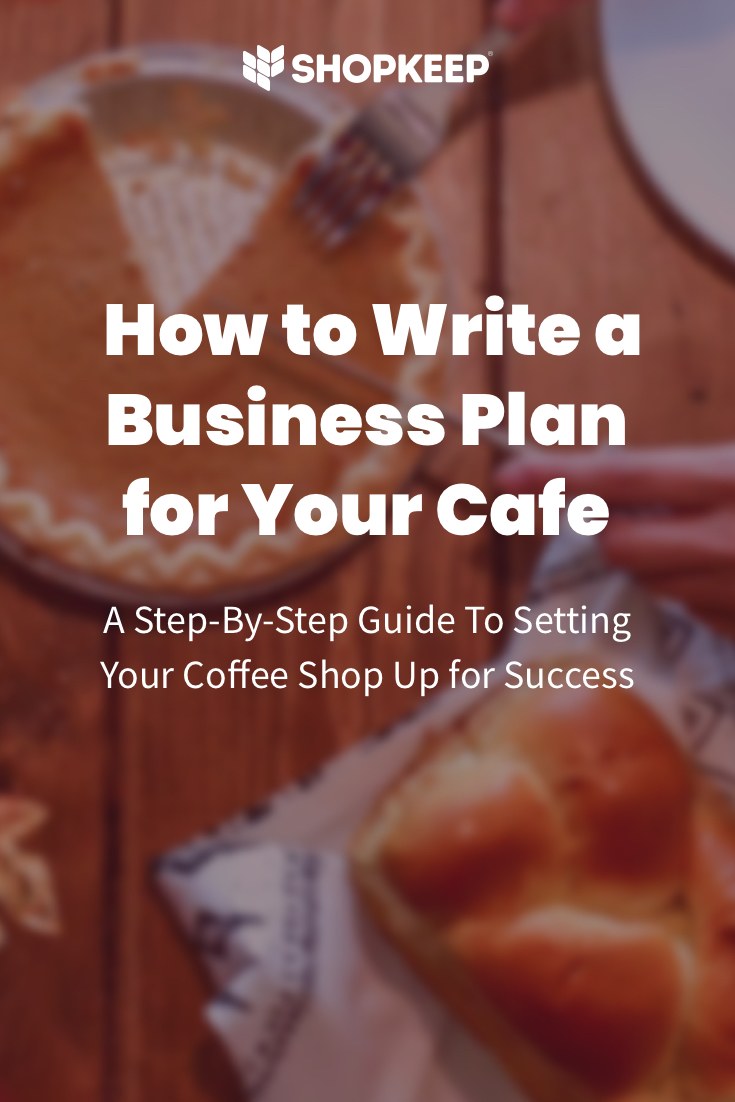
How to Write a Business Plan For Opening a Cafe
So you’re thinking of opening a cafe. We salute you. A well-crafted cafe is a bedrock of your community, an oasis in your town, and a second home for your regular customers. Before you can open a cafe, though, you have to essentially open a cafe business plan.
Think of your plan as a roadmap for your entrepreneurial adventure—one that’s easier to create than you might think! In this article, we’ll show you how to write a business plan that will set your cafe up for success.
What is a Cafe Business Plan?
At its core, a cafe or coffee shop business plan is a document that explains what your business idea is and how it will succeed. It answers questions like how much it costs to set up shop, how those costs will be funded, and how much money you expect to make from your cafe. The plan includes information about your competitors, target market, and pricing structure.
When it’s finished, your business plan can be shown to potential investors, bankers, partners, and anybody else who will help you open your cafe. As you can probably tell, it’s an extremely important document, so it’s worth your time and effort to get it right. First, you’ll learn about all the different pieces of information that will go into your business plan, and then we’ll help you pull the pieces together.
SEE ALSO: How to Start a Small Business 101: What is a Business Plan?
Start With Your Vision
A business plan is the first step in making your cafe-ownership dream a reality, so take time to dream by laying out your vision for your future cafe or coffee shop. What will your cafe look like? How will it be decorated? Where will it be located? Which items will you sell? Who will frequent it? How will your customers navigate your cafe, from the moment they walk through the door to the moment they swipe their credit card to check out?
Pull inspiration from cafes you love, images you’ve seen, your favorite films or books, even your travels. Then write it all down or post pictures on a wall to create an inspirational mood board. As you spend hours working on your business plan, it will be incredibly motivating to glance up at your initial vision and be reminded of the finish line.
Study Other Business Plans
Before you pen your masterpiece, look at business plan examples from your industry: cafes, coffee shops, and quick-serve restaurants. Study how they planned their business and make sure that your cafe is on the right track.
Real-world examples from small business owners are also invaluable. Seek out current or former coffee shop owners or even franchise owners in your town and ask them how they succeeded and what they would have done differently. While you’re at it, you can seek recommendations for, say, an accountant who can help you write your business plan. Even if local business owners are your future competition, they will probably be happy to share their experiences.
Find a Business Plan Template That Works For You
As everyone who has ever written a book report knows, a blank page can be overwhelming. That’s where templates come in. In the internet age, countless business plan templates are available as starting points. Find a business plan template that you like, and then dive in. Let’s get started!
Section 2: How Will Your Cafe Business Succeed?
The first section of your plan is called the Executive Summary, but you’ll write that part last. Instead, you’ll begin with the second section, which is known as the Business Opportunity of Business Industry Overview. This part answers questions like, “What problem does your cafe solve?” and “How will your cafe be the solution?” Maybe there is no coffee house or cafe in a busy retail center near you. Or maybe a restaurant just closed downtown.
This summary provides a brief overview of your industry, mentions where your cafe will be located, and describes how it will stand out. (Will your shop specialize in breakfast sandwiches near an airport? Sell your locally famous pie?) You know how your future cafe will be a success. Make sure the readers of your business plan understand that, too.
Section 3: Study Your Competition
The next part of your business plan is usually referred to as the Competitive Analysis. It explains how your cafe will compete with similar food and beverage businesses—including big coffee chains like Starbucks and fast food giants like McDonald’s. Nearby restaurants, coffee shops, and even public gathering areas like movie theaters are all your competition. So now is the time to do the (decidedly pleasant) research of visiting your potential competitors and making a note of who their customers are, as well as what’s for sale and how much it costs.
By understanding the pricing strategy for similar businesses, you will know how much you need to charge for your coffee, pastries, sandwiches, and whatever else you’re selling in order to remain competitive in your particular market. Gross margins (the amount of money you make based on what you sell) for cafes and coffee shops can be high, but small cafes have notoriously small operating incomes (read: profits) due to the high cost of overhead.
However, if you put in the time to undertake a thorough analysis of your competition, your cafe has a higher chance of being successful. By writing down how your cafe will compete against similar businesses, you will convince your reader (and, most importantly, yourself) that your goal of opening a restaurant or cozy cafe is realistic and sustainable.
Section 4: Analyze Your Target Market
In order for your cafe to succeed, it needs a steady flow of customers. Unfortunately, attracting foot traffic is not quite as easy as “if you build it, they will come.” But if you create a cafe with the right potential customers in mind, they will come!
In your business plan, your future customers are known as your market, the number of potential customers is your market size, and how you’ll reach them is your marketing plan. We know, you’re probably thinking, “But how can I know how many people will come to my cafe? I haven’t opened it yet!”
When starting a business, get creative about how you research. We’ve heard of people standing outside their potential storefront on a Monday morning and counting the number of commuters who pass. You can start with public information like the population of your town, and narrow it down from there.
In your cafe or restaurant business plan, you’ll then take your market and divide it further into market segments. For example, if your coffee shop or cafe is close to an elementary school, a market segment might be moms who stop by for high-end coffee after dropping their children off at school. Or college students studying for exams as they swig espresso. You get the idea.
By dividing your market into segments, you can zero in on how to reach each type of customer. And, you guessed it, that marketing plan (how you will advertise to your target market) will be outlined in your business plan as your Market Analysis.
Section 5: Tell Us What You’ll Sell & How You’ll Sell It
Now that you know what the competition charges, it’s time to create a pricing strategy for your cafe. That’s right, it’s menu-making time!
When creating your menu, be smart. You’ll be buying ingredients in bulk, so try to use the same ingredients in many different dishes. (There’s a reason most coffee shops offer so many flour and cheese-based items.) Thinking of selling wine at your cafe? Liquor, like coffee, offers some of the largest profit margins in the industry, but a liquor license will cost you money and there may be a waiting period, so you might want to start with non-alcoholic beverages.
And don’t be afraid to get creative. If you charge less for a croissant and coffee combination than you do for those items alone, you’ll encourage customers to buy more and cut down on food waste. Once you open for business, you’ll make changes to your menu, of course. But for the purpose of a business plan you’ll need to know how much you will charge for every cup of coffee or soup you plan to sell, which you’ll determine by breaking down the ingredients needed to make each item and researching your competition.
Section 6: Create a Marketing Plan
Your marketing plan can be part of your sales plan or a separate section. Will you advertise your specials every morning on social media? (We certainly hope so.) Will you partner with another local business for special promotions? In addition to marketing, now is also a great time to think about how you will retain your customers. Will you offer loyalty programs or have your employees give your top customers a free cookie on their birthday? With today’s point of sale technology, it’s easier than ever to reward—and keep—the customers who will frequent your cafe. So think big.
Section 7: Talk About Yourself
Your business plan will include the ownership structure of your business. Tell the reader how much experience you and your partners bring to the table, and why you’re the right person (or people) to go into business.

Section 8: Your Plan of Operations
Envision your cafe as a thriving business. Cafes, like coffee shops and restaurants, tend to have high operating costs. In this section, you’ll include information about your facilities, employees, equipment, and supplies. Think the direct costs of rent, barista wages, ingredients like coffee beans, and technology. Try to get many services out of individual tools, like a point of sale system that lets your customers check out, your part-time employees clock in, and also manages the inventory of your cafe.
Approximate how often you’ll need to reorder ingredients like flour and eggs. Carefully considering your operating costs during the business planning stage pays off. For instance, a coffee roaster is an upfront start-up cost, but roasting your own coffee at your cafe can save you operating costs in the long run. Save money where you can (secondhand chairs, anyone?) and don’t scrimp where it’s important, like your espresso machine.
SEE ALSO: Opening a Coffee Shop? Here is the Equipment List You Need
Section 9: Money Talks
Now you’re ready to craft a financial plan for your cafe. This is usually the most time-consuming and important section of your business plan, especially for lenders and investors. It will include an overview of your start-up costs, an income statement, projected cash flow, a balance sheet, and a break-even analysis.
Your Financial Plan: Startup Costs
You’ve heard the adage that it takes money to make money, and this is because most businesses need initial funding to get them off the ground. A major reason you might be writing a business plan in the first place is to secure funding, like a business loan, for your cafe, but remember that your start-up funds can come from anywhere. How much money do you need to borrow? Will you dip into your savings? Crowdfund from your fans?
Be sure to also research business plan competitions in your area. You may be pleasantly surprised to find support in unexpected places. No matter where you find your initial financing, a business plan lays out how your cafe will be funded and how that money will cover your business start-up costs.
SEE ALSO: The True Cost of Opening a Coffee Shop
Your Financial Plan: Income Statement
Once you know your start-up costs, operating costs, pricing strategy, and target market, you are ready to lay out all this information into an easy-to-digest income statement. Take all of your expenses (mainly operating costs) and your projected sales volume (the amount that you are selling each month based on your pricing strategy and market research) to prove that your cafe business will turn a profit. In your case, create a projected monthly income statement for the first year your cafe will be in business. Explore some examples of income statements to see what your final analysis will look like.
Your Financial Plan: Look Ahead To The Future
A big part of writing a business plan for your cafe is figuring out the projected cash flow your cafe will earn over time. How much time? Depending on the audience for your business plan, you may have to project your cafe’s cash flow up to five years in advance, broken up into months or quarters. Though this exercise might seem difficult, it’s not impossible. You’ve already completed most of the financial legwork.
Combine those crunched numbers with your personal experience as a customer and a worker to project how much money your cafe will make in the future. Consider seasonal differences, like a spike in business around the holidays if you’re in a busy shopping district, or a lull in business during the summer if your cafe caters to college students. Just like your income statement, these cash flow projections will go into your business plan as easy-to-view statements.
Your Financial Plan: Balancing Act
A balance sheet details the assets, liabilities, and equity of your cafe business on the day it opens. It’s generally used to determine how much money a business has to work with. For a small cafe, it’s not as important as the income statement, but is useful as a realistic snapshot of the financial health of your restaurant.
Your Financial Plan: Break Even
Now that you’ve detailed how you will make a profit, and you know how much money you are working with, you can approximate how long it will take your cafe to turn a profit. This is called the break-even point.
Section 1: The Most Important Section of All
When a reader opens your business plan, they will see the Executive Summary first. It gives a high-level overview of all the sections in your business plan. The highlights reel, if you will. That’s why you write it last. A well-written Executive Summary will get your foot in the door, so be sure to read examples to get a feel for how the summary is worded, and to see how all the information is presented.
Just as you thought about the customers who will visit your soon-to-be-open cafe, consider who will read your business plan and tailor the opening paragraphs to your audience. As you’re preparing to open your cafe, your Executive Summary is the most important marketing tool your cafe has.
Keep The Dream Alive
Though creating a business plan can seem complicated, remember that it’s an important step you should take before starting a cafe. A thoughtful business plan proves to others (and yourself) that your cafe can be successful. And completing a business plan is a monumental achievement in itself! Pat yourself on the back for undertaking such an impressive project. If you become discouraged, it may be helpful to glance at the cafe mood board you created to remind yourself that all your hard work and number crunching will be worth it when you open your doors for business.
Want to try ShopKeep for yourself?
Just answer a few easy questions.
Need help finding the right point of sale?
Just complete the form. We’ll call you right back to explain how ShopKeep can work for you.
Hit the ground running.Sprinting, in fact!
Read our free, comprehensive guide, Small Business 101, to learn all you need to know about starting a thriving business.


